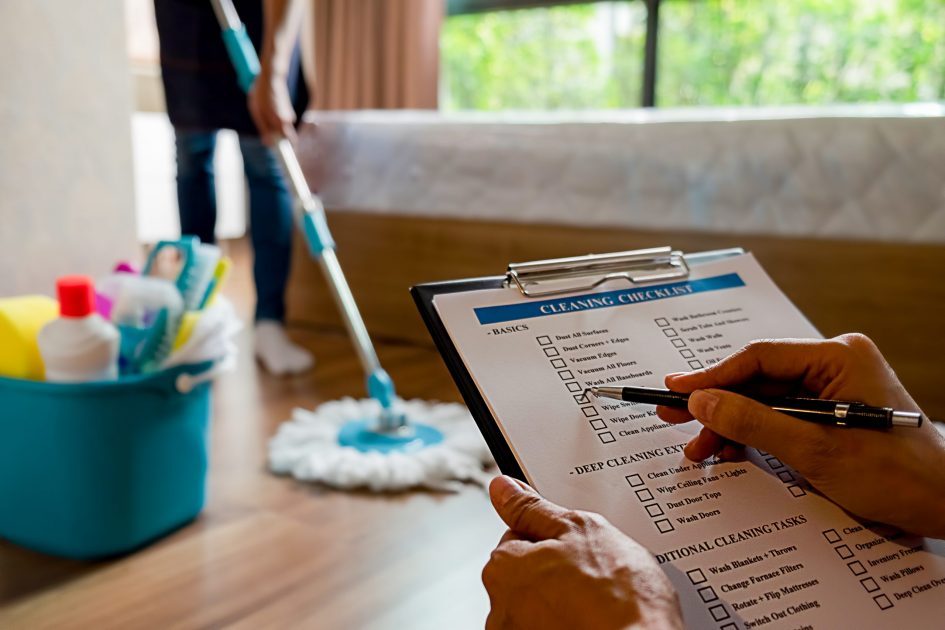
It's no secret that over the past two years, COVID-19 has presented long-term care institutions with unique challenges, and compounded the challenges they already face. Lack of money, staff shortages and epidemic prevention are burning issues that will persist even after the pandemic.
The question is, how can long-term care institutions meet these challenges without adding additional manpower and resources? The answer is to implement more effective and efficient cleaning and hygiene tools, training and procedures.
These important tips will help you design a specific program that will improve cleanliness and hygiene while addressing specific long-term care challenges.
Challenge 1: lack of funding
While funding for long-term care facilities has increased during the pandemic, the lack of funding remains an issue. It is therefore all the more important to provide environmental workers with the tools, training and education they need for effective and efficient cleaning.
How To Choose Your Cleaning Tools Effectively:
- Work with your supplier to ensure access to the most appropriate tools and supplies for your specific installation.
- Train environmental workers to effectively perform cleaning tasks and procedures to improve all cleanings, from daily cleaning to deep cleaning. A combination of online, virtual, and face-to-face training will help your environmental workforce thrive.
Challenge 2: shortage of staff
With the increasing need for long-term care, there has been a decline in the number of caregivers , which was exacerbated by the COVID-19 pandemic. The epidemics have hit facilities hard, and by July 2020, 48% of long-term care homes in Ontario had reported at least one epidemic. This resulted in a spike in the sector with 38 households reporting critical staff shortages in various functions due to issues such as employee contagion with COVID-19, fear of contagion with COVID-19 and concerns about access to equipment.
With fewer staff, finding inefficiencies in cleaning procedures is critical to maintaining the health and safety of residents and staff at the facility. With limited staff and resources, it is important to clean effectively without extending cleaning time. The easiest way to clean more effectively is to look for overly cleaned areas. While cleaning efficiency is critical, excessive cleaning can waste time and resources.
Here are three key ways to avoid excessive cleaning:
- Cleaning by degree of soiling: The degree of soiling refers to the amount of dirt on a surface. Dirty surfaces require more rubbing during cleaning to remove surface dirt, debris and pathogens. Train environmental staff to focus efforts based on soil level for more effective and efficient results.
- Concentrate on critical points of contact - Regardless of the facility, people come into contact with heavily used surfaces several times a day. Although it is not possible to keep high-touch surfaces completely sterile due to the high frequency of use, regular cleaning and disinfection is essential to minimize pathogens and the risk of epidemics. Some examples of important critical touch points are bed rails, bedside tables, hanging tables, call buttons, remote controls and touch screens.
- Leverage innovation: Innovative cleaning technology can help optimize resources and improve results. By researching automation solutions and relieving the burden of repetitive cleaning tasks, environmental workers have more time to focus on more complex tasks. One area that can be easily dumped is floor cleaning. Independent sweepers and scrubber- driers like the Nilfisk SC500 save time and money on cleaning routines . These machines automatically control the flow of water and detergent at the speed of the machine to ensure that the cleaning solution is used efficiently and that large areas can be cleaned more cheaply.
Challenge 3: Outbreak Prevention
Epidemic prevention is essential in long-term care. The median age in long-term care facilities in Ontario is 83 , placing residents in the highest risk category for disease. They are also more prone to complications from these diseases, which makes epidemic prevention an important issue.
The best way to fight epidemics is to take proactive measures before they happen. These measures include promoting effective hand hygiene practices, proper cleaning and disinfection, and effective donning and doffing of PPE.
Prioritizing correct cleaning is one thing, checking and validating the cleaning effect is another. One way to keep track of cleaning is to manage your digital cleaning schedule. Ces systèmes has a journal on nettoyage activities in temps réel pour s'assurer qu'un nettoyage approprié est effectué, and includes the suivi des tâches qui doivent etre effectsuées plusieurs fois par jour, says that the nettoyage and the disinfection of the contact point students . You also have powerful reporting tools to help fine-tune resource allocation and job scheduling to improve cleaning schedule performance and efficiency.
Digital cleaning program management systems help environmental workers:
- Check that the cleaning complies with the established cleaning protocols.
- Proactively clean areas based on specific traffic thresholds
- Track supplies usage and proactively replenish critical hygiene products based on automated alerts
- Validate the quality and effectiveness of cleaning through audit and reporting functions.
Software features and functions vary; some, like Visionstate of the wandaNEXT ™ software, contain to-do lists, compliance reports, planning heat maps , room usage data and much more.
David L. Smith is Director of Cleaning, Hygiene and Sanitation at Bunzl Cleaning & Hygiene , Canada's largest retailer of cleaning and hygiene products and equipment. For more information or to book a full facility review, please contact david.smith@bunzlch.ca.
Aucun commentaire:
Enregistrer un commentaire